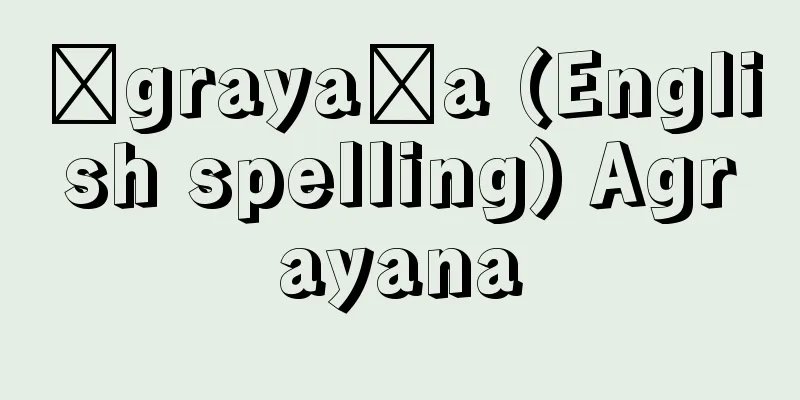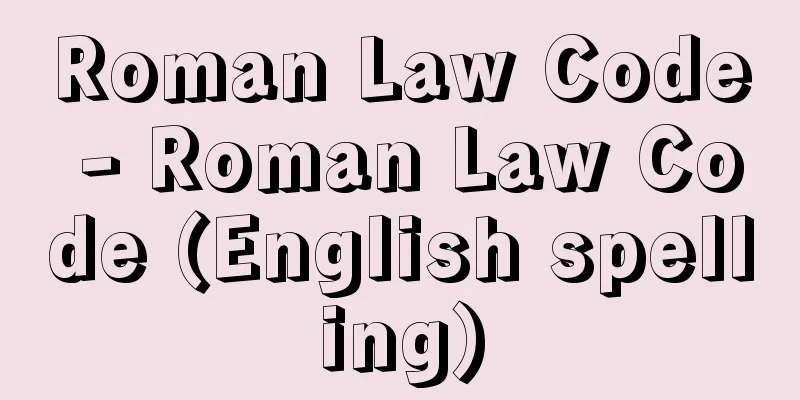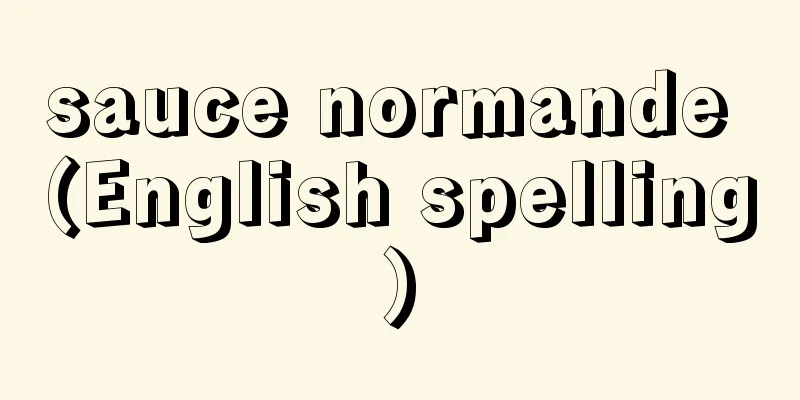Murder - Murder

|
The crime of intentionally taking another's life. In the Japanese Criminal Code, Chapter 26 of Part 2, it states that "Anyone who kills another person shall be punished with the death penalty, life imprisonment, or imprisonment for a term of not less than five years" (Article 199, ordinary murder), and "Anyone who incites or aids another person to commit suicide, or who kills another person at his request or with his consent, shall be punished with imprisonment for a term of not less than six months and not more than seven years" (Article 202, accessory to suicide and consensual murder. Hereinafter referred to as the crime of accessory to suicide). In addition to attempted murder, attempted murder is also punishable (Articles 203 and 201). In addition, the former Penal Code contained a provision on the murder of ascendants in Article 200, which stated that "a person who kills his or her own lineal ascendant or that of his or her spouse shall be punished with death or life imprisonment," but a Supreme Court ruling on April 4, 1973 determined that this violated the principle of equality in Article 14 of the Constitution. Therefore, with the partial revision of the Penal Code in 1995, Article 200 was deleted. Thus, with regard to the crime of murder, Japan's current Criminal Code prescribes ordinary murder and the crime of contributing to suicide as basic types, but looking at examples of legislation in other countries, many follow the tradition dating back to Roman law of distinguishing between premeditated murder and manslaughter based on the presence or absence of premeditation, and between ordinary murder and infanticide based on the object, and the United States, the United Kingdom, France, Germany and other countries follow this way of thinking (Japan's old Criminal Code was modelled on the French Criminal Code, and in addition to premeditated murder and manslaughter, it further categorized crimes into poisoning and other crimes). Of these, the maximum sentence is generally set for premeditated murder (the death penalty in countries that retain the death penalty), while infanticide is relatively light in punishment. [Tetsuro Nawa] The significance of "people"The object of the crime of murder is a "person," that is, a human being with a living body. A "person" begins with birth and ends with death. The meaning of "birth" is based on the full exposure theory in the Civil Code, but the partial exposure theory is the prevailing theory and precedent in the Criminal Code, because it is sufficient if an attack on a human body is possible. Therefore, unless even a part of the fetus is exposed outside the mother's body, killing a fetus inside the mother's womb does not constitute the crime of murder, and it is merely the crime of abortion (Articles 212-216 of the Criminal Code). Next, a distinction is made between a "person" and a "corpse" based on "death," and with regard to corpses, there are crimes such as abandoning a corpse (Article 190 of the Criminal Code) and the crime of excavating a grave and damaging a corpse (Article 191 of the Criminal Code). Regarding the definition of human death and the method of determining it under the Criminal Code, the conventional view and precedents adopted the three-sign theory or comprehensive theory, that is, defining human death as brain death and cardiac death, and determining these by the permanent cessation of pulse and breathing and dilated pupils, but an increasing number of people are adopting the brain death theory. This definition of human death was actively debated when the Organ Transplant Law was enacted and revised, but the current law (enforced in July 2010) maintains the previous three-sign theory or comprehensive theory, and defines the "body of a brain-dead person" to be used for organ transplantation as a "corpse." [Tetsuro Nawa] The meaning of "kill""Killing someone" in the crime of murder refers to any act that can take another person's life, and can be either an act of intent or omission. Of these, acts of intent such as stabbing, strangulation, poisoning, and shooting are generally committed with intent (called a crime of intent), but murder by omission (an example of a crime of inauthentic omission), such as when a mother starves her baby to death by not breastfeeding, also constitutes this crime. However, in the case of a hit-and-run fatal traffic accident, even if the driver of the car thinks that the death of the victim is inevitable and simply runs away, the crime of murder by omission does not exist unless the driver also takes an action that increases the risk of the injured person's death (for example, transporting the injured person to a place where they are less likely to be found by a third party and leaving them there), [Tetsuro Nawa] Crimes such as participating in suicideThe crime of murder is divided into ordinary murder and the crime of accessory to suicide, depending on whether the killing was against the will of the victim. In this regard, "double suicide," a form of joint suicide, becomes an issue. Since double suicide is accessory to suicide, the survivor of a double suicide falls under the crime of accessory to suicide. In contrast, there is no question that "forced double suicide," in which someone who has no intention of committing suicide is dragged along, constitutes murder. The problem occurs when a person with no intention of following their own life proposes a double suicide to another person, causing them to do the same and resulting in their death. In this case, the prevailing theory and precedents have interpreted it as murder, but the theory that it constitutes accessory to suicide is also prevalent. [Tetsuro Nawa] Grounds for precluding illegalityFor a crime of murder to be established, an act that meets one of the constituent elements of the crime must be illegal and culpable. In terms of illegality, if there are special circumstances that preclude illegality, such as self-defense (Article 36 of the Penal Code) or emergency evacuation (Article 37 of the same code), the crime will not be established. In particular, with the rapid progress of modern medicine, attention has been focused on whether the act of removing life support devices such as artificial respirators from terminally ill patients constitutes a reason for precluding illegality as a death with dignity. Next, in terms of responsibility, there are many cases where the act is not prosecuted or is found not guilty as the act of a person who is mentally incompetent, or the sentence is reduced as the act of a person who is mentally impaired (see Article 39 of the same code). [Tetsuro Nawa] [References] | | | | |mental impairment| | | | | |Source: Shogakukan Encyclopedia Nipponica About Encyclopedia Nipponica Information | Legend |
|
他人の生命を故意に奪う罪。日本の刑法は、その第2編第26章において、「殺人の罪」として、「人を殺した者は、死刑又は無期若(も)しくは5年以上の懲役に処する」(199条、普通殺)、「人を教唆し若しくは幇助(ほうじょ)して自殺させ、又は人をその嘱託を受け若しくはその承諾を得て殺した者は、6月以上7年以下の懲役又は禁錮に処する」(202条、自殺関与及び同意殺人。以下、自殺関与罪という)と規定する。また、これらの罪の未遂のほか、殺人予備も処罰される(203条および201条)。なお、かつての刑法にはその200条に尊属殺の規定があり、「自己又ハ配偶者ノ直系尊属ヲ殺シタル者ハ死刑又ハ無期懲役ニ処ス」とされていたが、1973年(昭和48)4月4日の最高裁判決によって憲法第14条の平等原則に違反するとされた。そのため、1995年(平成7)の刑法一部改正によって、この200条は削除された。 このように、殺人の罪に関し、日本の現行刑法は、普通殺、自殺関与の各罪を基本類型として規定しているが、諸外国の立法例をみると、予謀の有無により謀殺・故殺を区別し、客体により普通殺と嬰児(えいじ)殺とを区別するローマ法以来の伝統に従うところが多く、アメリカ、イギリス、フランス、ドイツなどはこの考え方に従っている(日本でも、旧刑法は、フランス刑法を範として、謀殺・故殺のほか、毒殺などさらに細かく類型化していた)。このうち、謀殺に対しては最高刑(死刑を存置する国では死刑)を法定刑とするのが一般であり、逆に、嬰児殺は比較的刑が軽くなっている。 [名和鐵郎] 「人」の意義殺人の罪の行為客体は「人」、すなわち生きた肉体をもった人間である。「人」は出生に始まり、死亡で終わる。「出生」の意義につき、民法では全部露出説の考え方によっているが、刑法では、人身に対する攻撃が可能であれば足りるという理由から、一部露出説が通説・判例である。したがって、胎児が母体外に一部でも露出していない限り、母体内の胎児を殺害しても、殺人罪の成立する余地はなく、堕胎罪(刑法212条~216条)にあたるにすぎない。次に、「死亡」により「人」と「死体」とが区別され、死体に対しては、死体遺棄等の罪(同法190条)、墳墓発掘死体損壊罪(同法191条)がある。刑法上、人の死の定義およびその判定方法につき、従来の通説・判例は、三徴候説または綜合(そうごう)説、すなわち、脳死と心臓死をもって人の死を定義したうえで、これらを脈拍と呼吸の永久的停止および瞳孔(どうこう)拡大によって判定する見解を採用していたが、脳死説を採用する者も増えてきている。このような人の死の定義について、臓器移植法の制定やその改正に際して活発に議論されたが、現行の同法(平成22年7月施行)では、従来の三徴候説または綜合説を維持したうえで、臓器移植に使用するための「脳死した者の身体」は「死体」とされている。 [名和鐵郎] 「殺す」の意義殺人の罪における「人を殺す」とは、他人の生命を奪いうる行為のすべてをいい、作為・不作為のいずれでもよい。このうち、刺殺、絞殺、毒殺、銃殺など作為による場合(作為犯という)が一般であるが、たとえば、母親が授乳しないで自分の乳児を餓死させる場合のように、不作為による殺人(不真正不作為犯の一例)も本罪にあたる。ただ、交通事故に伴うひき逃げ死亡事故に関しては、車の運転者が被害者の死亡もやむをえないと思ってそのまま逃走してしまった場合でも、負傷者の死の危険を高めるような行為(たとえば、負傷者を第三者に発見されにくい場所に搬送して、そのまま放置するなど)が加わらない限り、不作為による殺人罪は成立しない。 [名和鐵郎] 自殺関与等の罪殺人の罪は、殺害が被殺者の意思に反するか否かにより、普通殺と自殺関与罪とが区別される。この点に関し、共同自殺の形態である「心中」が問題となる。心中は自殺関与にあたるから、心中の生残り者は自殺関与罪に該当する。これに対し、自殺の意思を有しない者を巻き添えにする「無理心中」が殺人罪にあたるのは疑問の余地がない。問題となるのは、追死の意思を有しない者が相手に心中をもちかけ、心中の意を生じさせ、死亡させた場合である。このケースにつき、通説・判例は殺人罪にあたると解しているが、自殺関与罪説も有力である。 [名和鐵郎] 違法性阻却事由殺人の罪が成立するためには、殺人の罪に関するいずれかの構成要件に該当する行為が、違法かつ有責でなければならない。違法性に関しては、正当防衛(刑法36条)、緊急避難(同法37条)など違法性阻却事由(違法性が排除される特別な事情)にあたる場合には、本罪は成立しない。とくに、現代医学の長足の進歩に伴って、たとえば、末期患者から人工呼吸器などの生命維持装置を取り外す行為が、尊厳死として違法性阻却事由にあたるかが注目を集めている。次に、責任についていえば、精神病患者のほか、麻薬や覚せい剤の濫用による殺傷事件が多発していることもあって、心神喪失者の行為として不起訴または無罪とされたり、心神耗弱(こうじゃく)者の行為として刑が減軽されたりするケースがかなりある(同法39条参照)。 [名和鐵郎] [参照項目] | | | | | | | | | | |出典 小学館 日本大百科全書(ニッポニカ)日本大百科全書(ニッポニカ)について 情報 | 凡例 |
Recommend
Koto River
A river that flows through western Yamaguchi Pref...
Esthipite - Esthipite
... In the late 17th century, the Baroque era beg...
Warm sake - Kanzake
〘 noun 〙 Warm sake. Kanshu. ⇔ Chilled sake. 《Seaso...
Odosigaeru - Scary frog
...The eye patterns on the back of the thorax of ...
Pō mò (English spelling)
In Chinese painting, the depiction of mountains, s...
tzigane
…In English, they are called gypsies, which is a ...
Alaric [I] - Alaric
King of the Visigoths (reigned 395-410). He ravage...
Tower - Yagura
1. A storehouse for storing weapons. Arrow storeho...
Yellow rhododendron - Yellow rhododendron
An evergreen small shrub of the Ericaceae family ...
Author name (English)
...The scientific name of the Magnolia is Magnoli...
Grass vine - Grass vine
Please see the "Smilax" page. Source: E...
Theatron
…As many dictionaries agree, the word “theatre” i...
Gabrovo - Gabrovo (English spelling)
The capital of Gabrovo County in central Bulgaria...
Deformity - Kikei
A morphological abnormality occurring in an organ...
Karlskullhe - Karlskullhe
…Under the Habsburgs, they formed a unique and br...









